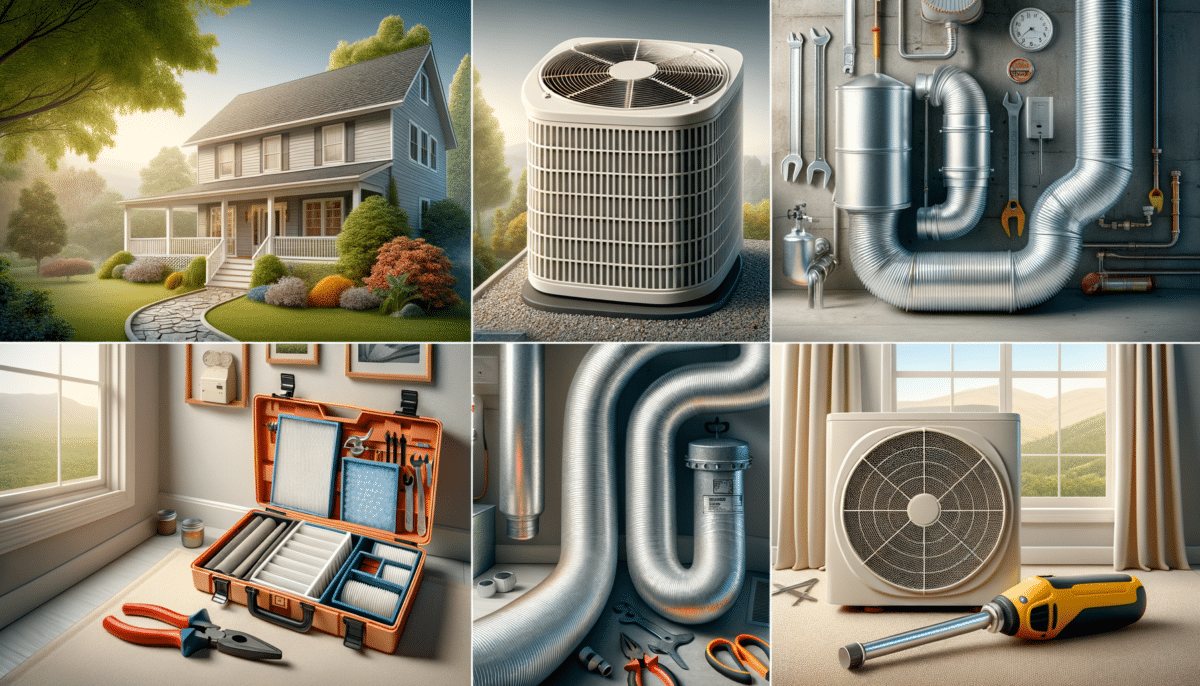Understanding HVAC Systems
Heating, Ventilation, and Air Conditioning (HVAC) systems are integral to modern living, ensuring comfort and air quality in residential and commercial spaces. These systems regulate temperature, humidity, and air purity, making them essential for creating a conducive indoor environment. HVAC systems are composed of various components, including furnaces, air conditioners, heat pumps, and ductwork, each playing a pivotal role in maintaining indoor climate.
The significance of HVAC systems extends beyond mere comfort. They are crucial for health, as poor air quality can lead to respiratory issues and exacerbate allergies. By filtering and circulating air, HVAC systems help in reducing pollutants and allergens. Moreover, efficient HVAC systems contribute to energy conservation, reducing utility costs and environmental impact.
Given the complexity and importance of HVAC systems, regular maintenance is vital. This includes checking filters, inspecting ductwork for leaks, and ensuring all components function optimally. Neglecting maintenance can lead to inefficiencies, increased energy consumption, and potential system failures, underscoring the need for routine checks.
Key Components of HVAC Systems
An HVAC system comprises several key components, each with a specific function. Understanding these components can aid in better maintenance and troubleshooting. Here are the primary components:
- Furnace: The furnace is the core of any heating system, responsible for generating warm air that circulates through the building.
- Air Conditioner: This component cools the air and removes humidity, ensuring a comfortable indoor climate during warmer months.
- Heat Pump: A versatile component that can both heat and cool a space by transferring heat between the indoors and outdoors.
- Ductwork: Ducts distribute air throughout the building, and their condition affects the overall efficiency and air quality.
- Thermostat: This device regulates the temperature by controlling the HVAC system’s operation based on user settings.
Each component requires attention to ensure the system operates efficiently. For instance, clean and well-maintained ductwork prevents energy loss and maintains air quality, while a properly functioning thermostat ensures optimal temperature control. Recognizing the role of each component can help in identifying issues and improving system performance.
Benefits of Regular HVAC Maintenance
Regular maintenance of HVAC systems offers numerous benefits, enhancing both performance and longevity. One of the primary advantages is improved energy efficiency. Well-maintained systems operate more efficiently, reducing energy consumption and lowering utility bills. This is particularly important in large buildings where HVAC systems account for a significant portion of energy use.
Maintenance also helps in preventing unexpected breakdowns. By identifying and addressing potential issues early, costly repairs can be avoided. This proactive approach not only saves money but also ensures consistent comfort levels throughout the year.
Moreover, regular maintenance improves indoor air quality. Clean filters and ductwork prevent the circulation of dust, allergens, and pollutants, contributing to a healthier living environment. This is especially beneficial for individuals with allergies or respiratory conditions.
Finally, maintaining an HVAC system extends its lifespan. Regular checks and servicing keep components in good working condition, delaying the need for replacements. This long-term benefit makes maintenance a wise investment for homeowners and businesses alike.
Common HVAC Issues and Troubleshooting Tips
Despite their importance, HVAC systems can encounter various issues that disrupt their operation. Understanding common problems and their solutions can help in quick troubleshooting and minimizing downtime.
Inadequate Heating or Cooling: This issue often arises from thermostat malfunctions, dirty filters, or blocked vents. Checking and adjusting the thermostat settings, cleaning or replacing filters, and ensuring vents are unobstructed can often resolve the problem.
Uneven Temperature Distribution: This can result from poor insulation, leaky ductwork, or incorrect system size. Sealing leaks and ensuring proper insulation can help in achieving uniform temperature distribution.
Strange Noises: Unusual sounds from an HVAC system may indicate loose components or mechanical issues. Inspecting the system for loose parts and lubricating moving components can mitigate noise problems.
High Energy Bills: If energy costs rise unexpectedly, it could be due to an inefficient system. Regular maintenance, including cleaning and servicing, can improve efficiency and reduce energy consumption.
By understanding these common issues and implementing basic troubleshooting steps, homeowners and facility managers can maintain optimal HVAC performance and comfort.
Future Trends in HVAC Technology
The HVAC industry is evolving, with new technologies enhancing efficiency and sustainability. One of the emerging trends is the integration of smart technology. Smart thermostats and sensors allow for precise temperature control and energy management, adapting to user preferences and occupancy patterns.
Another trend is the development of eco-friendly HVAC systems. These systems use alternative refrigerants and energy sources, reducing environmental impact. Solar-powered HVAC systems, for instance, harness renewable energy, offering a sustainable solution for climate control.
Additionally, advancements in air purification technology are improving indoor air quality. Systems equipped with advanced filters and UV light technology can effectively remove pollutants and pathogens, promoting a healthier indoor environment.
As these technologies continue to develop, they promise to enhance the efficiency, sustainability, and overall performance of HVAC systems. Staying informed about these trends can help consumers and businesses make informed decisions when upgrading or maintaining their systems.
